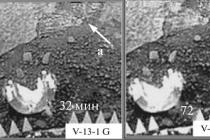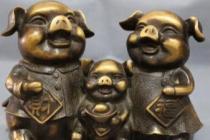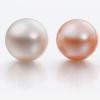View slides in large size
Presentation - Antiquity: the cradle of European artistic culture - Aegean art
2,673
viewing
Text of this presentation
Antiquity: the cradle of European artistic culture. Aegean art
Materials for the MHC lesson in 10th grade
Amur region, Bureya district
PREPARED BY TEACHER MHC MOBU Novobureyskaya Secondary School No. 3, Rogudeeva Liliya Anatolyena compiled on the basis of the program by Rapatskaya L.A. “World artistic culture: course programs. 10-11 grades – M.: Vlados, 2010. 2015

“Crete, the island of the great Zeus, lies in the middle of the sea...” Virgil Crete is the birthplace of the supreme Olympian god Zeus, here he was fed by a doe in the mountains of Ida...

The term "antiquity" comes from the Latin word antiquus - ancient. It is customary to refer to a special period in the development of ancient Greece and Rome, as well as those lands and peoples that were under their cultural influence. The chronological framework of this period, like any other cultural and historical phenomenon, cannot be precisely determined, but it largely coincides with time
The concept of antiquity
A perfect reconstruction of the Roman Forum
existence of the ancient states themselves: from the XI-IX centuries. BC, the time of the formation of ancient society in Greece and until the 5th centuries. AD - the death of the Roman Empire under the blows of the barbarians.

There are several stages in the history of ancient artistic culture. Homeric Greece (XI-VIII centuries BC), Archaic (VII-VI centuries BC), the development of cities, states with their slave-owning democracy led to the flourishing of architecture, the creators of which sought to search for harmony and proportionality , orderliness. “Order” (order, structure) - this is what the Romans called the system that was born in archaic architectural structures. In the narrow meaning of the word, an order means a type of relationship between a column (the load-bearing part of the building) and the ceiling lying on it - the entablature (the load-bearing part). classics (V-IV centuries BC), Hellenism (IV-I centuries BC), as well as Republican Ancient Rome (V-I centuries BC) and imperial Ancient Rome (I-V centuries AD) This culture had its own “prehistory” and even more ancient roots.

Homeric Greece...Here Zeus took the beautiful Phoenician princess Europa, turning into a golden bull

MINOAN CULTURE, a highly developed Bronze Age culture on the island of Crete (3rd-2nd millennium BC), a variant of the Aegean culture. Opened at the end of the 19th century. English archaeologist A. Evans, who created its periodization, dividing it into early, middle and late periods. The Greek archaeologist S. Marinatos made a great contribution to the study of culture. Named after the legendary king Minos, in whose myth some historical information about the Minoan civilization was preserved.

Arthur Evans English archaeologist Excavations on the island of Crete
Heinrich Schliemann German archaeologist Excavations at Mycenae

Of greater importance are the excavations that are being carried out on the island. Thira (Santorini). As a result of a volcanic explosion in the middle of the 2nd millennium BC. the middle of the island disappeared, and the rest of it was covered with volcanic ash, which buried the city and palace complex that existed here, called Akrotiri. The catastrophe that befell the Minoans preserved significant fragments of their culture intact.

5 km east of Heraklion are the ruins of the Knossos Palace. The first palace was built around 1900 BC. 200 years later it was destroyed by an earthquake and it was rebuilt again, becoming more majestic and luxurious. In the 15th century BC. The palace completely collapsed due to another earthquake and fire. The palace was not only a royal residence, but also a religious and administrative center.




Architecture of Mycenae
As a rule, all settlements and cities of the Achaeans were built on high hills, which they later called “acropolis,” which means “upper cities.” Fortresses of this kind have been preserved in Tiryns and Mycenae. The fortress had a central entrance, or rather it was a gate. For example, the world-famous Lion Gate, located in Mycenae, is considered the only version of monumental sculpture in all Aegean art of its time. The megaron was always located in the center of the palace. This is a kind of ceremonial room where festive feasts and other meetings were held. Around the megaron there were living rooms, bathrooms, storage rooms, and corridors. The houses of noble and rich people were built near the palace, and already beyond the boundaries of the fortress, at the very foot of the hill, stretched the lower city, where there were houses of common people, artisans and merchants.

The palaces of Mycenae and Tiryns were built on high hills. They were surrounded by thick walls made of roughly hewn stones. Modern scientists have called them “Cyclopean”.

Frescoes of Crete
“The Priest King” is a full-length figure on a red background, among mysterious flowers, wearing a headdress with feathers and with arms wide open. A copy of this huge fresco was painted on the King Minos ferry, which brought us to Crete. So we can consider the fresco to be an image of the legendary Cretan king Minos. “Playing with a bull” - on a blue background there is a huge figure of a bull and next to him three small human figures - one in front of terrible horns, the other on his back in a dizzying somersault. Apparently this fresco depicts real games - either entertainment, or a religious ritual. "Parisian" - an image of a woman's head in profile, with a surprisingly cheerful expression on her face. Why Parisian? This is what the archaeologist who discovered it called it, Evans. Probably such beauty and grace inspired thoughts about the women of Paris. “Dolphins” is probably the most favorite souvenir theme. They are very good in their bright blue.

“Parisian Woman” is an image of a woman’s head in profile, with a surprisingly cheerful expression on her face. Why Parisian? This is what the archaeologist who discovered it called it, Evans. Probably such beauty and grace inspired thoughts about the women of Paris.

“Games with a bull” - on a blue background there is a huge figure of a bull and next to him three small human figures - one in front of terrible horns, the other on his back in a dizzying somersault. Apparently this fresco depicts real games - either entertainment or a religious ritual.

“Dolphins” is probably the most favorite souvenir theme. They are very good in their bright blue.





It was on the Mycenaean Acropolis, according to the scientist, that the graves of Agamemnon, Eurymedon, Cassandra and other ancient Greek heroes should have been located. At the end of July, G. Schliemann began excavations, and already on August 7 he focused his attention on the interior of the acropolis. His experienced eye immediately noted a peculiar depression located to the right of the famous Lion Gate, and the famous accumulation of rubble.
Gold of Mycenae

In Mycenae, G. Schliemann discovered five famous tombs, the finds from which dazzled the entire scientific world with their artistic merits.

In the fourth tomb, the archaeological expedition of G. Schliemann discovered five large copper cauldrons, one of which was filled with gold buttons (68 gold buttons without ornament and 118 gold buttons with carved ornament).

The graves were literally filled with gold. But for G. Schliemann it was not the gold that was important, although there was almost 30 kilograms of it. After all, these are the graves of the Atrides that Pausanias spoke about! Are these masks of King Agamemnon? and his loved ones, everything speaks for this: the number of graves, and the number of buried (17 people - 12 men, 3 women and two children), and the wealth of things placed in them... After all, it is so huge that only the royal could collect it genus. Schliemann had no doubt that the mask of a man with a beard covered Agamemnon's face. Later studies showed that the mask was made almost three centuries before the birth of Agamemnon, but it is still associated with the famous Mycenaean king and is called: “The Mask of Agamemnon.”

Ancient Greek vase painting: Kamares style

Kamares (lat. Kamares) is a style of painting ceramic products that became widespread in the early palace period on the island of Crete (ca. 1900 - 1650 BC). The name of the style was given by the area in the central part of the island, where vases in this style were first discovered in a grotto. A characteristic feature of Kamares is a linear ornament, which was applied to a matte black base with white, orange or red paint. Thin-walled pottery was painted in this style during the Cretan-Minoan period. Kamares was extremely popular and spread along the entire eastern coast of the Mediterranean to Egypt.



D.Z. - Make notes in a notebook about the features of the development of Homeric Greece
Code for embedding a presentation video player on your website:
Elena Petrenko
Lesson summary of the MHC in the 10th grade “Antiquity - the cradle of European culture”
MUNICIPAL EDUCATIONAL BUDGETARY INSTITUTION
SECONDARY SCHOOL No. 32
Lesson on MHC in 10th grade
« Antiquity: .
Aegean art"
Highly qualified teacher
Petrenko E. M.
Subject lesson: Antiquity: cradle of European artistic culture. Aegean art.
Goals lesson: to introduce students to the most important achievements of the Aegean culture; develop the ability to independently and motivatedly organize one’s cognitive activity, search and critically select the necessary information from various sources; determine the main features of vase painting, fresco paintings, features of architectural structures of Crete and Mycenae crops; develop aesthetic taste and respect for world values culture.
During the classes
I. Organizational moment
Greetings.
II. Message (definition by students) themes and goal setting.
1) Guys, watch the video clip and try to determine the topic of our lesson.
Video fragment. ( "Gods of Ancient Greece") – 45 s.
Topic to which 3 will be devoted lesson: Antiquity: cradle of European culture.
Teacher: "Know yourself"- was inscribed on the Temple of Apollo at Delphi. To know ourselves today, it is necessary to understand what a person was like in the distant past, in the era "happy childhood of humanity".
2) Concept « Antiquity» .
Antiquity. Many threads stretch from it through the centuries to other eras and civilizations. Artistic creativity Antiquity was that source, from which all later art drew inspiration. For many centuries, starting from the Renaissance, thin. The culture of Antiquity was considered the cradle of world art. Term « antique» arose later, in the 15th century, means from lat. "ancient" and is used in relation to history and culture dr. Greece and others Rome.
3) Associative series.
Antiquity
Set goals for yourself to study this topic.
And I, with your permission, will change the punctuation mark in our topic (I bet). What does this mean for us?
4) Mythology.
What myths and legends of Ancient Greece are you familiar with? How do you know them? And in fact, why did ancient Greek mythology arouse and still arouse such keen interest among artists?
". the gods of Greece are nothing less than
like images of an ideal person,
deification of man."
V. G. Belinsky
“Art begins with mythology, lives by it and creates by it” V. N. Toporov
For those interested in history culture, literature and art, familiarity with Greco-Roman mythology is absolutely necessary. After all, since the Renaissance, artists and sculptors began to widely draw plots for their works from the tales of the ancient Greeks and Romans. Arriving at any art museum, an inexperienced visitor finds himself captivated by the beautiful, but often incomprehensible to him in content, works of the great masters of Russian fine art art: paintings by P. Sokolov (“Daedalus tying the wings of Icarus”, K. Bryullov (“The Meeting of Apollo and Diana”, I. Aivazovsky (“Poseidon rushing across the sea”, F. Bruni (“The Death of Camilla, Horace’s sister”), V Serova (“Abduction Europe", sculptures such outstanding masters as M. Kozlovsky (“Achilles with the body of Patroclus”, V. Demut-Malinovsky (“The Rape of Proserpina”, M. Shchedrin (“Marsyas”). The same can be said about some masterpieces Western European art, be it “Perseus and Andromeda” by Rubens, “Landscape with Polyphemus” by Poussin, “Danae” and “Flora” by Rembrandt, “Mucius Scaevola in the Camp of Porsenna”, Tiepolo or the structural groups “Apollo and Daphne” by Bernini, “Pygmalion and Galatea” Thorvaldsen, “Cupid and Psyche” and “Hebe” by Canova.
Greco-Roman mythology has penetrated so deeply into Russian literature that a person reading the poems of A. S. Pushkin (especially early ones) and to those unaware of mythological characters, the lyrical or satirical meaning of a particular work will not always be clear. This is true for the poems of G. R. Derzhavin, V. A. Zhukovsky, M. Yu. Lermontov, the fables of I. A. Krylov and others. All this only confirms the remark of F. Engels that without the foundation that was laid by Greece and Rome, there would be no modern Europe. The greatest influence had ancient culture on the development of all European peoples, therefore, is beyond doubt.
One myth about Orpheus and Eurydice inspired the creation of major musical works (opera, operetta, ballet) more than 30 composers from the 15th century to the present day.
Scientists claim that among the artistic works of world art based on literary sources, almost 9/10 go back to antique and biblical stories.
Ancient Greek mythology continues to live in modern speech (“Achilles’ heel”, “Gordian knot”, “sword of Damocles”, “panic”, etc.) and is imprinted in stone.
Influence antique mythology affected the architectural appearance of many cities Europe. In Moscow, St. Petersburg, Sevastopol and other cities, ancient buildings are decorated with ornaments, bas-reliefs, friezes, statues and sculptural groups, created on the basis ancient stories.
In order to understand ancient and modern music, painting, sculpture, we need to know and understand ancient mythology.
Why did the great masters from time to time, peering into the historical distance of the past, turn to the primary sources of spirituality, to instructive pictures of the era of the “childhood of mankind”?
Show block "Mythology in Art"
Conclusion: Humanism is born in the myths of Ancient Greece.
III. Main theme.
1) Periodization. (presentation)
1. Creto-Mycenaean or Aegean period (III-II millennium BC)
2. Homeric period (XI-VIII centuries BC)
3. Archaic (VII-VI centuries BC)
4. Classic(V-IV centuries BC)
5. Hellenism (IV -I centuries BC)
6. Republican Ancient Rome (V-I centuries BC)
7. Imperial Ancient Rome (I-V centuries AD)
2) Aegean art.
1. Teacher's story (presentation)
Crete Island - center antique world of the III-II millennium BC. e. - was at the junction of three continents: Europe, Asia, Africa. This made it possible for the Cretan culture develop in favorable contact with the ancients cultural worlds. The Cretan kingdom is a powerful maritime power with a powerful fleet and well-developed trade relations. The inhabitants of Crete were engaged in agriculture, cultivating the fertile plains of the island, collecting a rich harvest of grain, grapes, and olive oil all year round.
The king of Crete was Minos, hence the name of the civilization - Minoan.
The city-state of Mycenae reached its greatest prosperity in the 16th-13th centuries. BC e. after the death of the Cretan state. The Mycenaean civilization developed in the south of mainland Greece with centers in Mycenae and Tiryns. Its creators were the Achaean Greeks, therefore culture received the name Achaean.
Arthur John Evans - English archaeologist, collector of antiquities, curator of the Oxford Museum - had extraordinary scientific abilities and an adventurous nature romance. In 1900, he began excavations in Crete and discovered the ruins of a grandiose palace ensemble. The work lasted for forty years. He outlined his archaeological research in a four-volume work, for which Evans received the title of Lord. This was both global recognition and gratitude for the opportunity to study deeply and seriously culture vanished civilization.
Heinrich Schliemann, the son of a pastor, grew up in a poor family, was forced to leave school early and go to work. His life is like an adventure novel: he was a longshoreman, a helper in a grocery store, a cabin boy on a ship, an accountant, a gold miner, and a merchant. In all his endeavors he was successful thanks to fantastic luck and natural talent. Having become a wealthy man, he fulfills his childhood dream - to find Troy, in the existence of which few people believed at that time. The meaning of Schliemann's life was the desire to prove that the Homeric epic was based on real events. In his searches, he relies on Homer's Iliad as a guide. Schliemann bought a plot of land in Turkey that most closely matched Homer's descriptions. Excavations continued for three years, during which Schliemann managed to discover the legendary city and open a new page of ancient history, proving the authenticity of the events set out in the immortal “Iliad”. Now everyone believed Homer!
Successful excavations in Asia Minor inspired the archaeologist to new searches, following the instructions of Homer, in Greece. He discovered the ruins of Mycenae, the hometown of the leader of the Achaean Greeks in the Trojan War, Agamemnon. He found the fortress walls of the city, the domed and shaft tombs of the Mycenaean kings with unique precious objects and funerary gold masks. Later excavations in Tiryns and the things found proved that Tiryns belonged to the same culture, as Mycenae.
As the teacher's story progresses, the children fill out comparative tables.
In Crete, as well as in Egypt and Mesopotamia, they built a lot, but not temples, but palaces. The architecture was secular in nature, since it was not possible to find a single building dedicated to any deity. Crete's island position and powerful fleet ensured security for the Cretans. Therefore, the Cretan palaces did not have any fortifications: no moats, no fortress walls.
Mycenae and Tiryns were located directly on the Greek mainland, and such a location of cities in open areas was not safe. Therefore, the first feature of Achaean urban planning was the construction of powerful fortress walls.
Architecture Features
“The palace at Knossos, with its light, open architecture, is reminiscent of Renaissance palaces. The sailors who dropped anchor in the Cretan port saw an amazing picture. Against the background of the southern blue sky, in the rays of the hot sun, an ensemble of dazzling white buildings loomed beautifully. ... It was probably a beautiful, breathtaking sight, so it is not surprising that amazed sailors everywhere told miracles about the island.” (Zenon Kosidovsky)
The condition for the peaceful existence of Mycenae and Tiryns was the protection of their territories. The palaces were surrounded by impressive walls. Enemies who wanted to take the city by storm, in order to get to the gates, had to advance along the walls under a hail of arrows, spears, and stones
Palace ensemble
The Palace of Knossos is an ensemble, the harmony of which is created by a free combination of forms, the location of which depends on the features of the relief. This is the palace in all its splendor. Around it are high mountains with sparkling snowy peaks, flowering plains, and behind them a warm azure sea.
The Achaeans built their settlements on high hills, which they called “acropolises,” that is, “upper cities,” surrounding them with a ring of powerful fortress walls. The main buildings of the city were concentrated in the acropolis. The road to the acropolis passed through the fortress gates. The location of the Mycenaean Acropolis was advantageous for protection from enemy attacks: on one side of the acropolis there is a deep gorge, on the other sides there are fortress walls 18 m high.
Palace layout
The layout of the premises of the Knossos Palace was amazing. The world did not know such a layout. The central courtyard was adjoined on all sides by rooms located at different levels. Some of them are at the courtyard level, others are below, and others are two or three floors above. The palace had so many rooms, corridors, and intricate passages that it looked like a labyrinth.
The Mycenaean Acropolis is the palace of King Agamemnon. It was surrounded by a powerful fortress wall, reaching 6 meters in width. Within the walls there was a complex system of galleries, passages leading to food and weapons warehouses, and water tanks. Everything was provided for in case of defense and a long siege of the city.
In contrast to the Cretan ones, the palaces of the Achaean rulers were distinguished by symmetry and had a clear system in the arrangement of rooms and halls. Near the palace there were houses of the nobility, and outside the fortress, at the foot of the hill, lay the lower city, where ordinary people, merchants, and artisans lived.
The central room of the palace.
The central place in the huge architectural complex of the Palace of Knossos is occupied by an open rectangular courtyard measuring 50 by 30 meters, lined with slabs. All buildings were located around this courtyard. Only blank walls faced the outside, and the façade was turned inward.
The heart of the Mycenaean palace is the megaron (Greek: “great hall”)- a ceremonial room for meetings and festive feasts. Oblong, isolated from the outside world by massive walls, the building greeted those entering with columned porticoes. Then, through the lobby, guests entered the large hall - the megaron. The very word “megaron” denoted both the building itself and its main hall - a large room with a hearth in the center and columns around it, which became the prototype of Hellenic temples. Around the megaron there were living rooms, corridors, storage rooms, and bathrooms.
Knossos palace
The white walls of the Cretan palace and dark columns tapering towards the bottom - such columns are found only in Crete. So unusual design gives the impression of a solid support, which is very necessary in such an aerial structure. The burgundy-red color of the columns created a special decorative effect.
Interior of the Palace of Knossos
Despite the complex layout, life in the palace was comfortable and pleasant. Internal staircases connected the floors and connected to large open verandas. The staircases, cutting through the entire building from top to bottom, served as light wells, small courtyards through which air and light penetrated. This saved the palace residents from the scorching sun; the rooms always felt pleasantly cool.
Mycenaean Acropolis
If the distinctive feature of Cretan architecture is the lack of symmetry, then the peculiarity of Mycenaean architecture is that huge stones were used in the construction of fortifications and defensive structures of the Achaean rulers. These are partially processed blocks, the spaces between them were filled with small stones. The Hellenes would call such masonry “Cyclopean.” It amazes the imagination even today. And in fact, only the Cyclops giants were able to drag these blocks up the mountain and stack them on top of each other.
The condition for the quiet existence of the Achaeans was the protection of territories, therefore Mycenaean architecture is simple and harsh.
Homer in his “Iliad” called Mycenae “abundant with gold”, and Tiryns – “strong-walled”
There were only two entrances to the fortified city - the main gate on the eastern side and a secret passage on the western side, hidden under the walls. Before you is the famous “Lion Gate” (entrance to the Mycenaean Acropolis): The wide span is crowned by a triangular relief depicting two lionesses placing their paws on a pedestal.
The fortress towered over vast expanses of plains and slopes of low hills.
Tombs of the Achaean kings
Among the most famous monuments of Mycenaean architecture are the tombs of the Achaean kings. For deceased rulers, rectangular graves were carved into the rocks. It was possible to get to the tombs located in deep burials by making vertical wells-shafts, hence their names - shafts. Later, the construction of domed tombs - tholos - begins. Monumental tholos are not inferior in their grandeur to palaces and fortress walls. A narrow corridor, the dromos, led to the burial chamber under the mound. The burials were distinguished by their extraordinary splendor and wealth.
Painting
The walls of the Knossos Palace were decorated with frescoes - painting on wet plaster. Artists covered the walls with bright and colorful decorative paintings. They used various paints: black, white, red, yellow, blue, green. The subjects of the frescoes are the most various: scenes of peaceful life, various processions, images of animals, marine motifs.
The walls of the palace in Mycenae are also decorated with paintings, but they are typical of scenes of battles, siege of a fortress, harnessing horses, and hunting.
Women's images
The important place that women occupied in Minoan society is evidenced by frescoes depicting Cretan aristocrats. A lively face, a slightly upturned nose, slight coquetry, a complex hairstyle, a playful curl of curls, huge eyes - a portrait of a young woman whom archaeologists called “Parisian”.
The images of Mycenaean palaces are less picturesque and more schematic, and artistically inferior to Cretan ones.
A masterpiece Minoan fine art is the fresco “The Priest King”, in which an elegant tanned youth walks through a flowery meadow. The figure of the young man is interpreted in the spirit of the Egyptian canon: legs and head – in profile, shoulders and eyes – in front.
The ideal of beauty was considered to be fragile figures with thin, wasp-like waists. The heroes of the frescoes are in constant motion. Like Egyptian drawings, they are characterized by convention. colors: male figures are drawn with dark brick-red paint, and female figures with light paint.
Images of Mycenaean male figures cultures are less graceful. These are marching warriors in armor.
Animal images
The most mysterious fresco of the Knossos Palace is “Playing with the Bull”. In all likelihood, such games were extremely popular. Maybe it was a sports competition, or maybe one of the religious rites of the islanders. The human figures seem miniature next to the powerful body of the bull. His elongated figure fills the entire fresco. This scene still causes heated debate among scientists. An acrobat performs a dizzying somersault over the back of an angry bull. Spanish bullfighters and American cowboys claim that it is impossible to perform such a trick, the speed of the bull is too high. What is this - a real scene or an artist’s fantasy? The artist so skillfully captured the cheerful and relaxed play of acrobats that we forget about the mortal danger of such stunts. The fresco is perceived as a hymn to the beauty and dexterity of man.
The image on the Achaean sword is also full of expression. Swift male figures are trying to stop the attacking lion. Mycenaean artists often depicted predatory beasts; such scenes were never seen in Crete.
Frescoes of the Knossos Palace
Painting is the main decoration of the palace chambers. It is filled with dynamics, its characters are in constant motion. The images are distinguished by their bright colors, they do not frighten, they do not glorify anyone, they delight the audience. Patterns covered walls, ceilings, and sometimes floors. The Throne Room is richly decorated. At the northern wall there was a throne with a high back; on the walls there were depictions of fantastic griffins - lions with eagle heads. The walls of the palace's ceremonial premises introduce one to the life and entertainment of the palace. inhabitants: holidays, theatrical performances, dancing, children's fun.
Sculpture
Works of monumental round sculptures Crete did not reach us. Found objects of small sculpture prove that Cretan craftsmen knew how to work with different materials: clay, ivory, faience, bronze, and gold. In the Knossos Palace, figurines of women with snakes, only 30 cm high, were found. These are images of priestesses, and snakes in their hands are a symbol of prosperity in the house. The Cretans considered snakes to be good deities. The women's figures are constrained and static.
An example of a monumental Mycenaean relief culture is the Lion Gate. This is the central entrance to the fortress, above the span of which there is a limestone slab with a relief image of a column - the sacred symbol of the rulers of Mycenae, and on the sides there are frozen figures of royal lions. Others sculptural No images were found at Mycenae.
Symbols of the Knossos Palace
The uniqueness of the religion of the Cretans is manifested in the fact that the inhabitants of the island did not know the veneration of deity in the temple, which is customary for modern times; not a single temple building was discovered during the excavations. The deity was worshiped in sacred groves, caves, in the palaces of rulers and in the homes of ordinary citizens. It was there that small shrines with images were found cult objects. For example, a rhyton is a water vessel in the shape of a bull's head. A large number of various images of a bull or its horns indicated that this animal, although it was not half-man, half-bull (according to the myth, was very popular.
Images of a double ax - a labrys - the most revered symbol of the Cretans, as well as bull horns, but not quite common for the peace-loving inhabitants of the noble island, are very often found in the palace chambers. Therefore, some scientists suggest that this may be related to the word “labyrinth,” which means “house of the double axe.” Labrys is a symbol of strength and superiority.
Riches of the tombs of the Achaean kings
The burials in the tombs were distinguished by their extraordinary splendor. A large amount of jewelry, silver and gold cups, tiaras, ceremonial weapons, daggers, and gold plates that decorated clothes were found in them. An interesting find are masks made from the faces of deceased leaders; they convey some of a person’s individual traits. Generous gifts accompanied the rulers into the afterlife.
Pottery art of Crete
The skill of Cretan potters and artists is evidenced by vases made on a potter's wheel and painted with all kinds of ornaments. The style in which these vases are made is traditionally called “kamares” - after the name of the modern village near which products of this kind were found. Patterns and stylized plants that entwined the vase were applied to a dark background with white paint. The Cretan master always sought to emphasize the shape of the product with a drawing. If it is round, it was decorated with an octopus or a circular design. If the vase was elongated, plant stems stretching upward were depicted on its surface. There are no images of human figures on the vessels, only fish, octopuses, starfish, and plants.
3) View a video clip ( "Seven Wonders of Ancient Greece. Knossos palace")
4) Work in groups.
Group 1 – select images related to Cretan culture.
Group 2 – select images related to Mycenaean culture.
Group 3 – fill out the table – comparative analysis of Cretan and Mycenaean architecture.
Group 4 – syncwine. Aegean art.
A song plays while you work "Argo".
5) Checking the completion of the task.
Continue the sentence:
It's interesting that...
It's surprising that...
V. Evaluation (laurel wreaths) The guys give their bay leaves to the most active ones.
VI. Reflection.
Name our lesson in one phrase - an association.
To use presentation previews, create a Google account and log in to it: https://accounts.google.com
Slide captions:
Presentation on MHC Antiquity: the cradle of European culture.
Antiquity. Antiquity (from Latin antiquus - antiquity) is a set of historical forms of social consciousness, religion, mythology, philosophy, science, art in the countries of Western Asia, in Ancient Greece and Ancient Rome. The era of antiquity began with the Olympic Games in 776 BC. e., and ended with the fall of Rome in 476 AD. e. Since antiquity covers a fairly long period of time and human history, it is usually divided into several stages. Also in antiquity one should look for the origins of many values that later formed European culture. Ancient Greek temple.
The Cretan-Mycenaean period - the prehistory of antiquity. End of III-II millennium BC e. - Minoan and Mycenaean civilizations. The emergence of the first state formations. Development of navigation. Establishing trade and diplomatic contacts with the civilizations of the Ancient East. For Crete and mainland Greece at this stage, different periods of development are distinguished, since on the island of Crete, where a non-Greek population lived at that time, statehood developed earlier than in Balkan Greece, which underwent at the end of the 3rd century. BC e. conquest of the Achaean Greeks. In fact, the Cretan-Mycenaean period is the prehistory of antiquity.
Minoan civilization (Crete). The Minoan civilization was a state ruled by a king. The Minoans traded with Ancient Egypt and exported copper from Cyprus. The architecture is characterized by reinterpreted Egyptian borrowings (for example, the use of columns). The Minoan army was armed with slings and bows. A characteristic weapon of the Minoans was also the double-sided labrys axe. Like other peoples of Old Europe, the Minoans had a widespread cult of the bull (taurocatapsia). The Minoans smelted bronze, produced ceramics and built palace complexes from the mid-20th century BC. e. (Knossos, Phaistos, Mallia). King-Priest. Fresco in the Palace of Knossos.
Early Minoan period (XXX-XXIII centuries BC). General characteristics of the period: Dominance of tribal relations. The beginning of the development of metals. The beginnings of crafts, the development of navigation, a relatively high level of agrarian relations. Jugs for storing grain and olive oil.
Middle Minoan period (XXII-XVIII centuries BC). General characteristics: the period of “old” or “early” palaces. The emergence of early state formations in different parts of the island. Construction of monumental palace complexes in several regions of Crete. Early forms of writing. Ruins of the Knossos Palace on the island of Crete.
Late Minoan period (XVII-XII centuries BC). The rise of the Minoan civilization. At this time, the unification of Crete took place, and the naval power of King Minos was created. This period was characterized by the flourishing of monumental construction (“new” palaces in Knossos, Mallia, Phaistos) and active contacts with ancient Eastern states. Natural disaster of the mid-15th century. BC e. becomes the cause of the decline of the Minoan civilization, which created the preconditions for the conquest of Crete by the Achaeans. King Minos.
Mycenaean civilization (Balkan Greece). Early Helladic period (XXX-XXI centuries BC). The dominance of tribal relations among the pre-Greek population in Balkan Greece. The appearance of the first large settlements and proto-palace complexes. Middle Helladic period (XX-XVII centuries BC). The settlement of the first waves of Greek speakers - the Achaeans - in the south of the Balkan Peninsula, which was accompanied by a slight decrease in the overall level of socio-economic development of Greece. The beginning of the decomposition of tribal relations among the Achaeans. Late Helladic period (XVI-XII centuries BC). The emergence of an early class society among the Achaeans, the formation of a productive economy in agriculture, the emergence of a number of state entities with centers in Mycenae, Tiryns, Pylos, Thebes, etc., the formation of original writing, the flourishing of Mycenaean culture. The Achaeans subjugate Crete and destroy the Minoan civilization. In the 12th century. BC e. a new tribal group invades Greece - the Dorians, the death of the Mycenaean statehood.
Theater (Greek θέατρον - the main meaning is a place for spectacles, then - spectacle, from θεάομαι - I look, I see). One of the areas of art in which the feelings, thoughts and emotions of the author (creator, artist) are transmitted to the viewer or group of viewers through the actions of an actor or group of actors.
Greek theater. The Greek theater was an open building of enormous size. The stage consisted of a long narrow platform and was surrounded on three sides by walls, of which the back one (with a canopy) was called skene, the side ones were called paraskenions, and what we call the stage was called proskenion. The semicircle of seats for spectators rising in ledges was called an amphitheater, the place between the stage and the amphitheater was called an orchestra; a choir was located here, which was controlled by a coryphaeus (choir leader). With the development of dramatic action, a tent (skene) was added to the orchestra, where the actors dressed and changed clothes (each of the actors played several roles). The Greek theater did not know scenery in the usual sense of the word. This influenced the design technique of Greek tragedy. The actors wore masks, buskins (high shoes with wooden heels) and long toe-length cloaks (their color depended on the role - kings, for example, wore red cloaks). All this was supposed to give the actor height and grandeur, likening him to the god or hero he portrayed. In accordance with this, the actor’s gesture was exaggerated, and his recitation was solemn and pathetic. Aspendos.
Ancient drama. Ancient Greek drama developed from a ritual performance in honor of the god Dionysus. It was usually accompanied by round dances, dances and songs (dithyrambs). The content of these songs was a legend about the adventures of Dionysus. The performers reproduced this legend with their dances and facial expressions. Then a leader stood out from among the choir, to whom the choir answered. His role was often performed by professional actors who already existed at that time (dancers, various amusing artists who entertained the crowd at gatherings). Some researchers believe that in ancient times a priest spoke about the sufferings of the god Dionysus, sacrificing a goat on the altar (goat in Greek tragos, hence tragedy). Dionysus
Aeschylus. (ancient Greek Αἰσχύλος, 525 BC - 456 BC) - ancient Greek playwright, founder of the genre, father of European tragedy. The era of Aeschylus' youth was a time of fierce struggle between the Peloponnesian tragedy and the original Attic dithyramb. The most famous work of Aeschylus is the “Prometheus” trilogy about a titan who entered into a confrontation with Zeus himself (unfortunately, only the second part of the tragedy has survived to this day - “Prometheus Bound”). The last known trilogy of Aeschylus (458 BC) is his “Oresteia” - fortunately, preserved in its entirety (tragedies: “Agamemnon”, “Choephora” (libation bearers) and “Eumenides”). The content of this trilogy is the fate of the Atrides family in the person of its most glorious representatives Agamemnon and his son Orestes.
Sophocles (ancient Greek Σοφοκλής, 495 BC - 405 BC) - an Athenian, together with Aeschylus and Euripides, forms a triad of the most famous ancient tragedians. He introduced new devices into the stage production of plays: he increased the number of actors to three, and the number of choreographers from 12 to 15, reducing the choral parts of the tragedy, improved the scenery, masks, and introduced painted scenery. Seven tragedies have come down to us, three of which, in content, belong to the Theban cycle of legends: “Oedipus”, “Oedipus at Colonus”, “Antigone”; one to the Hercules cycle - “Dejanira”, and three to the Trojan cycle: “Eanthus”, “Electra” and “Philoctetes”. In addition, about 1000 fragments have been preserved by different writers.
Euripides (ancient Greek Εὐριπίδης, 480 - 406 BC) is an ancient Greek playwright, a representative of the new Attic tragedy, in which psychology prevails over the idea of divine fate. He paid great attention to the development of female roles. Of the 92 plays attributed to Euripides in antiquity, the titles of 80 can be restored. Eighteen tragedies have come down to us, of which "Res" is believed to have been written by a later poet, and the satirical drama "Cyclops" is the only surviving example of this genre. The best ancient dramas of Euripides are lost to us; of the survivors, the most famous is “Hippolytus”. Among the surviving plays, the earliest is Alceste, and the later ones include Iphigenia at Aulis and The Bacchae.
Ancient Greek comedy. Ancient Greek comedy was born at the same festivals of Dionysus as tragedy, only in a different setting. If tragedy is basically ritual worship, then comedy is a product of amusements that began when the liturgical part of the Dionysius, gloomy and serious, ended. In Ancient Greece, they organized processions (komos, hence the comedy) with riotous songs and dances, put on fantastic costumes, entered into arguments, fights, exchanged witticisms, jokes, often obscene, which, according to the ancient Greeks, was encouraged by Dionysus. During these amusements, the main elements of the comic genre arose: the Doric everyday scene (mime) and the Attic accusatory choral song.
Aristophanes Aristophanes (ancient Greek Ἀριστοφάνης) (444 BC - between 387 and 380, Athens) - ancient Greek comedian, “father of comedy.” The largest representative of political comedy. He waged a fierce struggle with democracy, which was in power during the Peloponnesian War. Aristophanes was a supporter of peace, since war had a detrimental effect on the landowning aristocracy, whose ideology he expressed. This determined the reactionary nature of his philosophical and moral views. Of the 44 comedies written by Aristophanes, only 11 have reached us: “Horsemen”, “Birds”, “Lysistrata”, “Frogs” and others. Aristophanes caricatured Socrates and often parodied his contemporary Euripides, an exponent of democratic sentiments. Most of his comedies were vicious satires of democratic rulers, including Cleon and Pericles. He played the role of Cleon in the comedy “Babylonians” himself, since the actors did not dare to do this, fearing the ruler’s revenge.
The history of Ancient Greece is usually divided into 5 periods, which are also cultural eras: Aegean or Kritomekenian (III-II millennium BC
AD),
Homerovsky (XI-IX centuries BC);
Archaic (VIII-VI centuries BC);
Classical (V-IV centuries BC);
Hellenistic (second half of IV-middle
Ivv. BC.).
Homeric Greece period
Around the 8th-7th centuries. BC.the blind singer-storyteller created
two great poems called
"Iliad" and "Odyssey"
(several poems have been recorded
centuries later)
Homer's works were discovered
the most important page in history
antique artistic
culture. It is no coincidence that the philosopher
Plato called the poet
"Educator of Greece" During this period, the Greeks built temples to their gods, but they did not reach us,
Only the remains of the foundations and images on vases have survived.
In the 8th century. BC. ceramics flourished. Using a potter's wheel
and firing, many works were created, both everyday and
ritual.
Ceramics from that time have survived to this day.
painted in the so-called “geometric style” - with ornaments
from circles, rhombuses, triangles, etc.
Amphora. 750g. BC.
Greek mythology
There are many wonderful forces in nature,But there is no stronger person.
Sophocles "Antigone"
During this period, Greek mythology took shape,
within which a person creates a holistic picture
world, the main feature of which was the fairy-tale-religious convention. The gods of Olympus became the source
plots and images of artistic creativity. Check yourself:
1
2
God of wine and
fun.
6
7
3
4
Supreme
Goddess of love olympic
and beauty.
God,
lord
gods and people.
5
Son of Zeus and
nymphs of Maya,
patron
trade.
10
8
Goddess
wisdom and
fair
th war
9
Goddess
hunting.
Twin
Apollo.
King's wife
gods.
Patroness
family and marriage,
helped
women with
childbirth
God
underground
peace,
spouse
Persephone.
Lord of the Seas
shows
violent
and independent
disposition
Husband
Aphrodite,
lame godsmith,
patron
fire.
Archaic period
Greek archaic art - new in style and spirit - arose inthe era of the formation of republican rule, the emergence
poleis - Greek city-states.
Greek architecture, like sculpture, developed in the archaic era.
The art of the Greek archaic has a special harmony and poetic
As a feeling, it is addressed to a person, reflects the joy of life. A unified architectural language - an order system: a certain
the ratio of the carried and load-bearing parts of the structure and its features
decorations.
There are three types of Greek orders:
Doric
Ionic
Corinthian Temple of Hera at Paestum In the archaic era
built
Greek sanctuaries.
Temple of Apollo at Delphi
The sanctuaries were
concentration
ancient rituals
and gradually
major centers
arts
Temple of Athena Aphaia on the island. Aegina. 510490 BC.
The temple became the prototype of the Parthenon. Sculpture occupied a large place in archaic art,
which decorated not only temples, but was also an integral part
religious cult.
The new ideal of beauty is healthy
human body - embodied in
statues that have come down to us
The girls are always in clothes (drapery).
Bark
Naked youth athletes
Kuros Archaic painting can be judged mainly
on black-figure and red-figure vase painting.
Achilles and Ajax playing checkers.
Exekius
Pelika with swallow
Ephrony
Classical period
The classical period of ancient art, continued the traditions of the archaicin all types of arts: architecture, painting, plastic arts.
The greatest works of Greek art were created
In the 5th century BC e. The beginning of this period was marked by a victorious struggle
Freedom-loving Greeks and Persians.
In the advanced policies a democratic republican system is emerging
way of government.
The ideals of democratic cities, imbued with the pathos of heroic
fight against enemies, found expression in art, literature, and
architecture. Athens Acropolis
Was the center of all the highest shrines
Athenians
Even through the ruins you can
imagine how beautiful he was in his
Acropolis time. Let's enter the Acropolis from the west through the central entrance - Propylaea A wide marble staircase led to the hill.
To her right, on a raised platform, like a precious casket,
Placed a small elegant
temple to the goddess of victory Nike Apteros The basis of the composition
The Acropolis was the principle
asymmetry
(which is typical for classics).
Reconstruction of the Acropolis
Acropolis plan Thirty meters from
Propylaea, on a pedestal
there was a symbol
Armed world -
bronze statue
Athens Warriors.
Colossal statue
goddesses of wisdom and
just war
dominated
city and was visible from
seas. The main building of the Acropolis is the Parthenon Temple,
dedicated to Athena Parthenos (virgin).
Built by the architects Ictinus and Callicrates.
One of the most beautiful
Hellenic temples.
It is huge and powerful, built
made of golden pink marble. The Erechtheion, dedicated to Athena, was erected opposite the Parthenon.
Pallas (mother) and her husband Poseidon Erechtheus.
Layout of the Ereikhtheion
very complex and asymmetrical,
the temple was built on different
levels and divided into two
parts.
There are three adjacent to the temple
portico, including
and portico of the caryatids
(sculptural
image
female figures,
bearing the floor). The sculptural decoration of the Parthenon was created under the direction of Phidias. Athena Numerous sculptors worked in Greece in the 5th century. BC e.
Among them, the three most significant stand out: Miron,
Polykleitos and Phidias.
Miron in his work finally overcame
the last vestiges of archaic art with its rigidity and
immobility of forms. In the middle of the 5th century. BC e. he created the statue
Disco thrower - a young man throwing a discus. Difficult pose
he conveyed the athlete straining to throw vividly and convincingly.
And in his other works, Miron sought to reveal everything
richness and variety of human movements.
Discus thrower
Athena
Marsyas Unlike Myron, his younger contemporary Polykleitos usually
depicted a calmly standing man. Enjoyed special fame
his statue of Doryphoros (spearman), an athlete-warrior who embodies the ideal
an excellent and valiant citizen of a free polis (c. 440 BC).
The pose of the young man, with one leg slightly bent and leaning on the other, is simple.
and natural, the muscles of his strong body are conveyed vividly and convincingly.
Polykleitos built his sculptures according to the system he developed
mathematically exact relationship of parts of the human body. Ancients
the Greeks called the statue of Doryphorus a canon, that is, a rule; many generations
sculptors followed its proportions in their works.
Diadumen
Amazon
Doryphoros At the end of the 5th century. BC e. the period of the slaveholding crisis begins
policies of Greece. The war between Athens and Sparta weakened Greece.
The worldview of the Greeks and their attitude towards art are changing.
The majestic and sublime art of the 5th century, glorifying the heroic citizen, gives way to works reflecting
individual feelings, personal experiences. Sculptor of the first
half of the 4th century BC e.
Skopas depicts wounded soldiers with distorted faces
suffering. His statue of the Maenad, the companion of the god of wine, was famous
Dionysus, rushing in a frantic, drunken dance (reduced
a marble copy is in Dresden, in the Albertinum).
Pothos
Maenad The gods also began to be depicted in a new way. In the statues of the illustrious
sculptor of the 4th century BC e. Praxiteles' gods, having lost their greatness and power,
acquired features of earthly, human beauty. God Hermes he
depicted as resting after a long journey (Museum, Olympia). In the arms of
god the infant Dionysus, whom he amuses with a bunch of grapes.
Apollo
Saurocton
Hermes with
as a baby
Dionysus
Venus
Torso of Aphrodite
Venus de Medici Sculptor of the second half of the 4th century. BC e. Lysippos created a new image
young athlete. In his statue of Apoxyomenos (a young man cleansing the body of
sand) it is not the pride of the winner that is emphasized, but his fatigue and
excitement after the competition (Vatican Museum, Rome).
Apoxyomenes
Hermes,
putting on sandals
Hercules The rise of ancient Greek theater coincided with the flowering of architecture.
art. Spiritual ideas were embodied in ancient tragedies and comedies.
quest of the ancient Greeks. Beyond the temples to the highest achievements of Greek architecture
include theaters. These open structures with rising
steps - seats for spectators - were distinguished by excellent
acoustics. The famous theater in Epidaurus was built
architect Polycletus the Younger in the 4th century. BC e.
Hellenistic era
A new stage in the history of Greece, which began after the conquestsAlexander the Great.
At this time, art was called upon to glorify the victories of the royal rulers of Greece and those conquered by Alexander
Macedonian countries of the east.
This art embodied a new idea of the greatness of the world, united
In the vast expanse of Hellenic culture.
Battle of Alexander the Great with the Persians
Lion hunt Lighthouse at the entrance to
Alexandria harbor
on the island of Faros. Nike of Samothrace
Agessander Venus de Milo
150g. BC. Battle of gods and giants.
Fragment of the frieze of the altar of Zeus in Pergamon.
12. Name of the sculpture and
era
13
14.
.
Name
sculpture and author.
Antiquity is the scientifically accepted general name for Greco-Roman history and culture. The chronological framework of the ancient period is conditional - it usually begins with the end of the Cretan-Mycenaean civilization and ends with the 4th century, the era of barbarian invasions of Europe and the fall of the Western Roman Empire (476). The distribution area of ancient culture is very wide and covers the entire Mediterranean region, the territories of Europe; in some of its forms, ancient culture was grafted onto the territories of the Near and Middle East up to India.
The main political features of the ancient period are the formation of two main types of state-political structure: democracies in Greece (5th century), empires in Rome (1st century BC).
The main state and cultural centers of antiquity were Greece and Italy. It was the specific features of their cultures that became legislative in the territories of the classical Mediterranean. The dominant religious-mythological system of the period, with all the local differences, constantly emerging new cults, and the widespread influence of Eastern religions, was Greco-Roman.
If up to 3 c. BC e. The appearance of Mediterranean ancient culture was predominantly Greek and Greco-Eastern, then with the entry of Rome into the Mediterranean, the universalist tendencies of the new state had a leveling effect on the entire culture, linguistic situation, and religious systems.
In the 6th century. BC e. Greek philosophy is born, Pythagoras calls himself the first philosopher. Soon the first philosophical schools appeared. The main currents of philosophical thought in antiquity were Pythagoreanism, Platonism, Aristotelianism, Stoicism, Cynicism, Neoplatonism, and Epicureanism.
The main milestones in the history of ancient art were the geometric period, or the Homeric period (10-8 centuries BC), archaic (8-6 centuries BC), classical and Hellenistic, during which the formation of the main types of architecture, order system, sculpture developed - from hieratic idol-like kouros and kors of the late 7th century. to statues with complex movements.
Greek painting is almost lost to us (the works of the great Parrhasius, Zeuxis, Polygnotus, Nikias, etc. are known to us only from descriptions), and its main body of work at present is black-figure and red-figure vase painting of the 6th-4th centuries. BC e.
The main theme of Greek art is man. The Greeks knew deep psychologism in art. They depict a wide variety of feelings and emotions; in the depiction of movement, the most complex angles and poses are possible (in the art of Hellenism), but the dominant “truly Hellenic” image has become a noble and ideally beautiful image, over which changeable feelings have no power.
Question 19 Culture of Ancient Greece.
In the history of Dr. Gr. 8-6c. BC. characterized by big changes in households. activities, social life, k-re. One of the greatest acquisitions of the Arch. period there are Homer's works "Iliad" and "Odyssey". In the 7th-6th centuries. BC. arose lyrics, one of the first lyres. Archilochus is considered a poet. In the first half. 6th century BC. on the island of Lesbos Sappho created, the cat’s creativity. was the pinnacle of Dr. Gr. In 8-6c. in Dr. Gr. there was a rise in image-creative art and art. In the 7th century BC. stone buildings appear. Ch. So these are temples. In the process of forming the group. ar-ry there are 3 main directions: Doric (used mainly in the Peloponnese, characterized by simplicity and severity of forms), Ionic (lightness, harmony, decorativeness), Corinthian (refinement). Temples of the arch. period: Apollo in Corinth and Hera in Paestum. In sculpture by arch. period, the main place is occupied by the image of a person. Gr. artists are trying to master the correct structure of a person’s body and learn to convey movement. Painting ch. arr. known to us from vase paintings. In the 6th century Black-figure painting dominates; figures are depicted on a yellow surface using black varnish. At the end of the 6th century. Red-figure painting appears when the figures remain in the color of clay, and the background is black and varnished. Generalization of knowledge about the environment. world were the basis for the development of f-fii. The founder of the Milesian f-f school was Thales, who believed that the fundamental principle of the world is water, from the cat. everything arises in the cat. everything transforms. “Apeiron”, indefinite, eternal matter, air, fire, was also considered the fundamental principle. Ancient Greece ph and mathematician Pythagoras founded the ph school in South. Italy. According to him, the world consists of quantitative patterns, cat. can be calculated. The merit of the Pythagoreans was the development of theorems, the theory of music based on numerical relationships, and the establishment of a number of regular patterns in the world. The idealistic line in Physics, founded by the Pythagoreans, was continued by the Eleatic Physics school. The victory over Persia gave Gr. full power in Sre-rya. Military production, trade, and the use of slave labor contributed to the development of all sectors of the economy. Classic period. In class period dramaturgy develops. The emergence of gr. The theater was associated with the cult of the god of wine Dionysus. The actors performed in goat skins and therefore this genre was called “tragedy” (“song of the goats”). Famous playwrights of this period were Aeschylus (“Chained Prometheus”), Sophocles (“Antigone” and “Oedipus Rex”), Euripides (“Medea”, “Electra”). Rhetoric flourished from prose genres in the classical period - the ability to clearly express one’s thoughts and convincingly defend one’s positions. Among the f-f problems in class. period, the understanding of the essence and place of man in the world comes to the fore, and consideration of the problems of existence and the fundamental principles of the world continues. A materialistic interpretation of the problem of fundamental principles was put forward by Democritus, who developed the doctrine of atoms. Ancient Greece the sophists taught that “man is the measure of all things,” and the essence of things depends on their connection with man. Socrates saw the path to achieving truth in self-knowledge. To explain existence, Plato developed the theory of the existence of “ideas.” Plato also paid significant attention to issues of the state; he proposed a draft of an ideal policy, which physically forms high moral qualities in her. But the formation and flourishing of g-zma are deeply contradictory. Good and evil intertwined in the most bizarre way. Science, poetry, art, and fine arts are developing. But problems of social relations are solved with dagger and poison, conspiracies and wars. The Borgia family, led by Pope Alexander 7, went down in history - a murderer, robber and libertine, but endowed with brilliant talent as a statesman. Harmony in social the device was not achieved, passions took possession of individuals, prompting them to act without stopping at anything and without thinking about the consequences.














